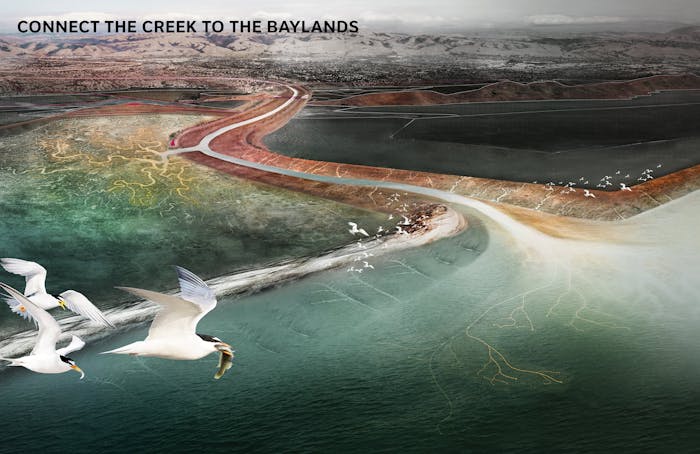The Bay’s marshes and mudflats are multi-beneficial resources.
They provide habitat, cushion the urban edges of Alameda County from extreme storms and tidal events, filter water, and sequester carbon. Yet these resources are at risk – land subsidence and sea level rise threaten to damage or destroy the Bay’s marshes and mudflats by 2100.
Projections show that with 3.5’ of sea level rise by 2100, the region’s current sediment supply will not sustain these ecosystems over time. Without sediment, our baylands will drown. This represents a slow but devastating scale of loss that threatens ecosystems, recreational landscapes, and places hundreds of thousands of residents and the region’s critical drinking water, energy, and transportation systems at risk.
Public Sediment for Alameda Creek represents a paradigm shift in how we plan for climate change – rather than hardening the edge and ignoring the long-term consequences, we must recalibrate our relationship with sediment and water resources and invest today in living systems that will grow over time to adapt to sea level rise. The proposal supports unlocking and remaking broken systems and applying this thinking at other scales– to the necklace of tributaries that feeds the Bay, to the Delta and the larger Rivers of California.
Source: Resilient by Design | Bay Area Challenge

 03 Good Health and Well-being
03 Good Health and Well-being
 09 Industry, Innovation and Infrastructure
09 Industry, Innovation and Infrastructure
 11 Sustainable Cities and Communities
11 Sustainable Cities and Communities
 13 Climate Action
13 Climate Action